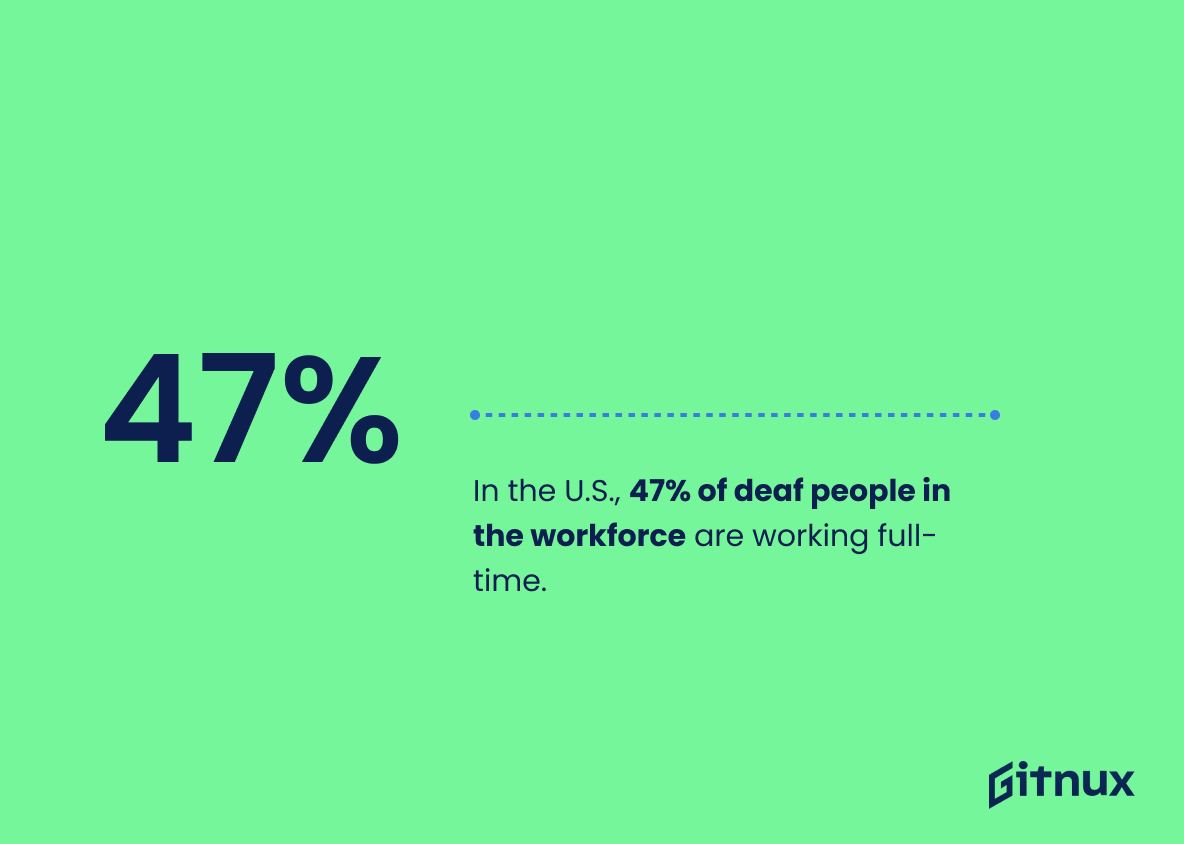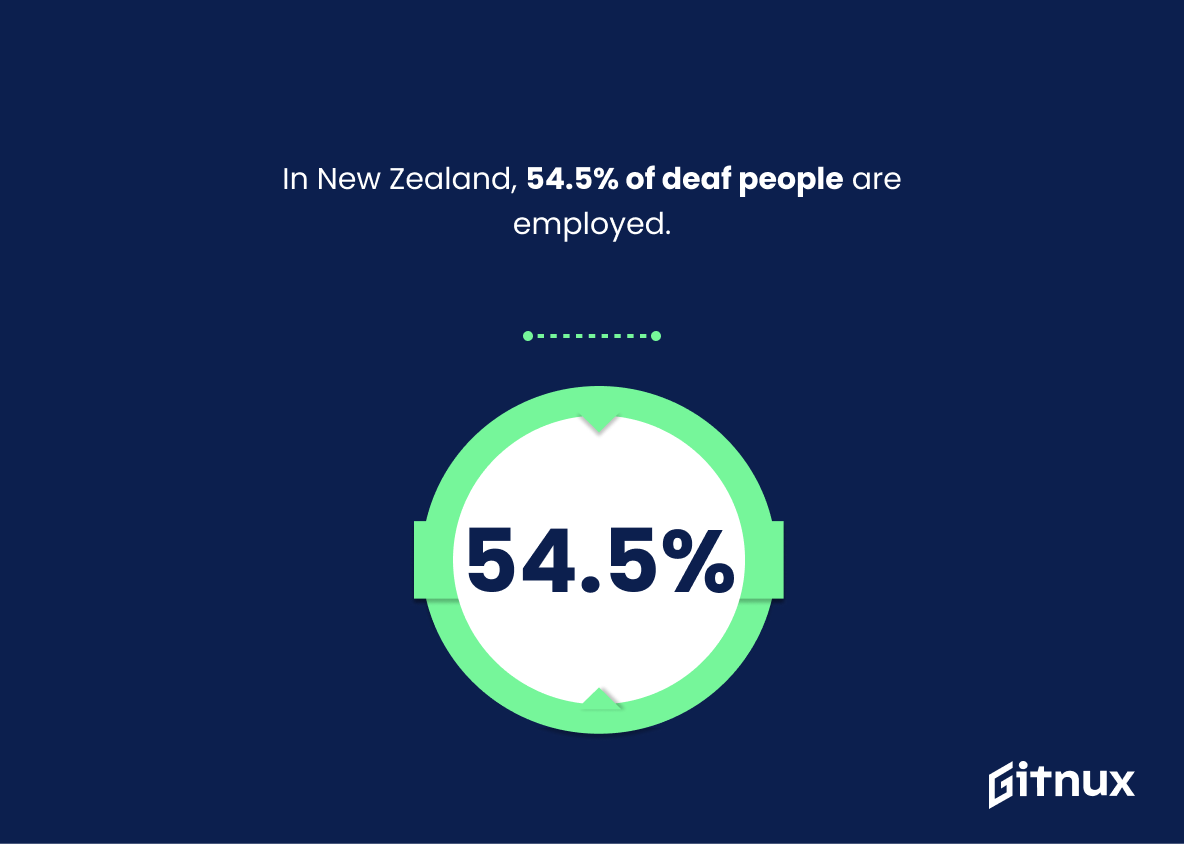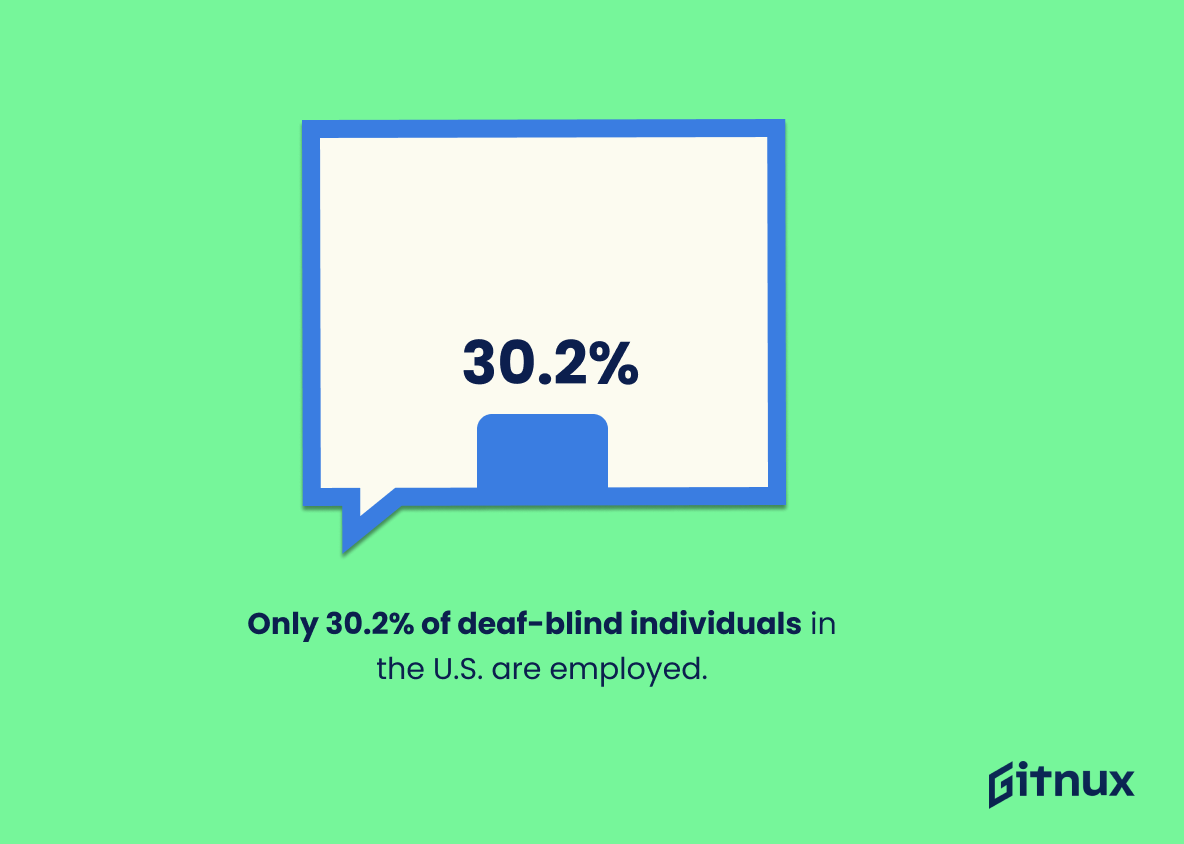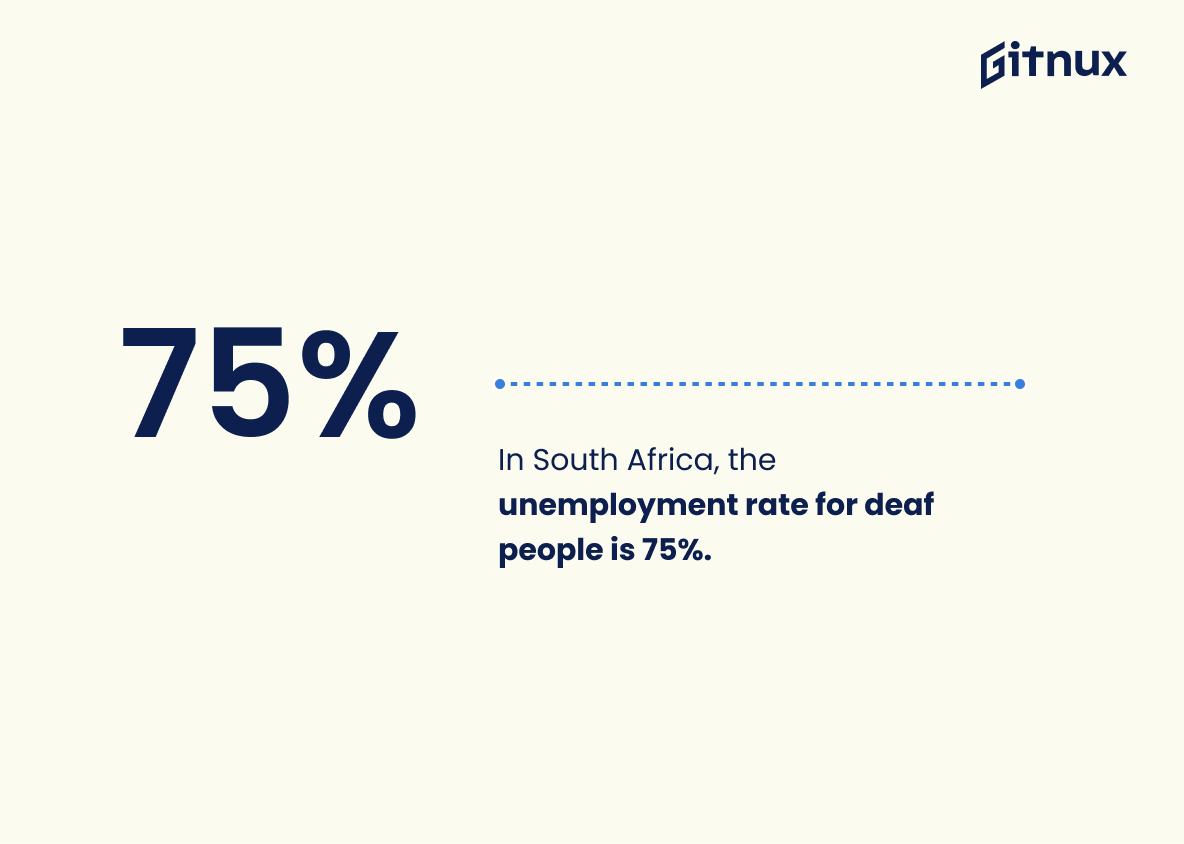The employment rate of deaf people around the world is a topic that deserves attention. This blog post will explore statistics from various countries, including the United States, Europe, Australia, Canada, New Zealand and South Africa.
We’ll also look at data for different groups within these countries such as women and those with college degrees or high school diplomas. Additionally, we’ll examine how this compares to hearing populations in each country and what can be done to improve job opportunities for deaf individuals worldwide.
Deaf Employment Statistics Overview
Deaf people are 40% less likely to be employed in Australia.
This statistic is a stark reminder of the challenges Deaf people face when it comes to employment in Australia. It highlights the need for greater awareness and action to ensure that Deaf people have equal access to employment opportunities. It is a call to action to create a more inclusive and equitable society for Deaf people.
Deaf Canadians have an employment rate of 45%.
The fact that Deaf Canadians have an employment rate of 45% is a stark reminder of the challenges they face in the job market. This statistic highlights the need for more inclusive policies and practices to ensure that Deaf Canadians have equal access to employment opportunities.
In the U.S., 47% of deaf people in the workforce are working full-time.
This statistic is a powerful indicator of the progress being made in the employment of deaf people in the United States. It shows that nearly half of deaf people in the workforce are able to secure full-time employment, a significant improvement from past decades. This statistic is a testament to the hard work and dedication of deaf individuals and organizations that are striving to create a more inclusive and equitable workplace.
Only 29% of the deaf and hard of hearing population work in professional or managerial positions.
This statistic is a stark reminder of the lack of opportunity for the deaf and hard of hearing population in professional and managerial positions. It highlights the need for more inclusive workplaces that provide equal access to these positions for individuals with hearing impairments. It also serves as a call to action for employers to create more inclusive hiring practices and to provide the necessary accommodations for deaf and hard of hearing employees.
In New Zealand, 54.5% of deaf people are employed.
This statistic is a powerful indicator of the progress being made in New Zealand towards providing employment opportunities for deaf people. It shows that the country is making strides towards creating an inclusive and equitable society, where deaf people are given the same opportunities as their hearing counterparts. This statistic is a testament to the hard work of those advocating for the rights of deaf people, and it serves as a reminder that there is still much work to be done in order to ensure that deaf people are given the same opportunities as everyone else.
In the U.S., 40% of deaf employees work in education, health and social services fields.
This statistic is a powerful reminder of the importance of deaf employees in the education, health and social services fields. It highlights the valuable contributions that deaf individuals make to these industries, and the need for employers to recognize and support their deaf employees. It also serves as a reminder of the need for more inclusive policies and practices in the workplace, so that deaf employees can continue to thrive and contribute to their respective fields.
Only 30.2% of deaf-blind individuals in the U.S. are employed.
This statistic is a stark reminder of the challenges faced by deaf-blind individuals in the U.S. when it comes to finding employment. It highlights the need for more resources and support to help these individuals gain access to meaningful employment opportunities.
In South Africa, the unemployment rate for deaf people is 75%.
This statistic is a stark reminder of the challenges faced by deaf people in South Africa when it comes to finding employment. It highlights the need for greater efforts to be made to ensure that deaf people have access to the same opportunities as their hearing counterparts. It also serves as a call to action for employers to be more inclusive and to create an environment where deaf people can thrive.
35.4% of deaf and hard of hearing employees work in public administration and service industries in the U.S.
This statistic is a telling indication of the prevalence of deaf and hard of hearing employees in public administration and service industries in the U.S. It highlights the importance of these industries in providing employment opportunities for deaf and hard of hearing individuals, and serves as a reminder of the need for continued support and advocacy for these individuals in the workplace.
Conclusion
The statistics presented in this blog post demonstrate that deaf people around the world face significant employment disparities. In many countries, including the United States, Europe, Australia and Canada, only half of all deaf individuals are employed. Furthermore, those who do find work often earn less than their hearing counterparts and have fewer opportunities for professional or managerial positions.
Deaf-blind individuals experience even greater difficulty finding employment, with an average rate of 30%. These figures highlight a need to create more inclusive workplaces where everyone has equal access to job opportunities regardless of disability status.
References
0. – https://www.eud.eu
1. – https://www.nationaldb.org
2. – https://www.abc.net.au
3. – https://www.afripol.org
4. – https://www.nad.org
5. – https://www.chs.ca
6. – https://www.deafinconline.org
7. – https://www.workbridge.co.nz









